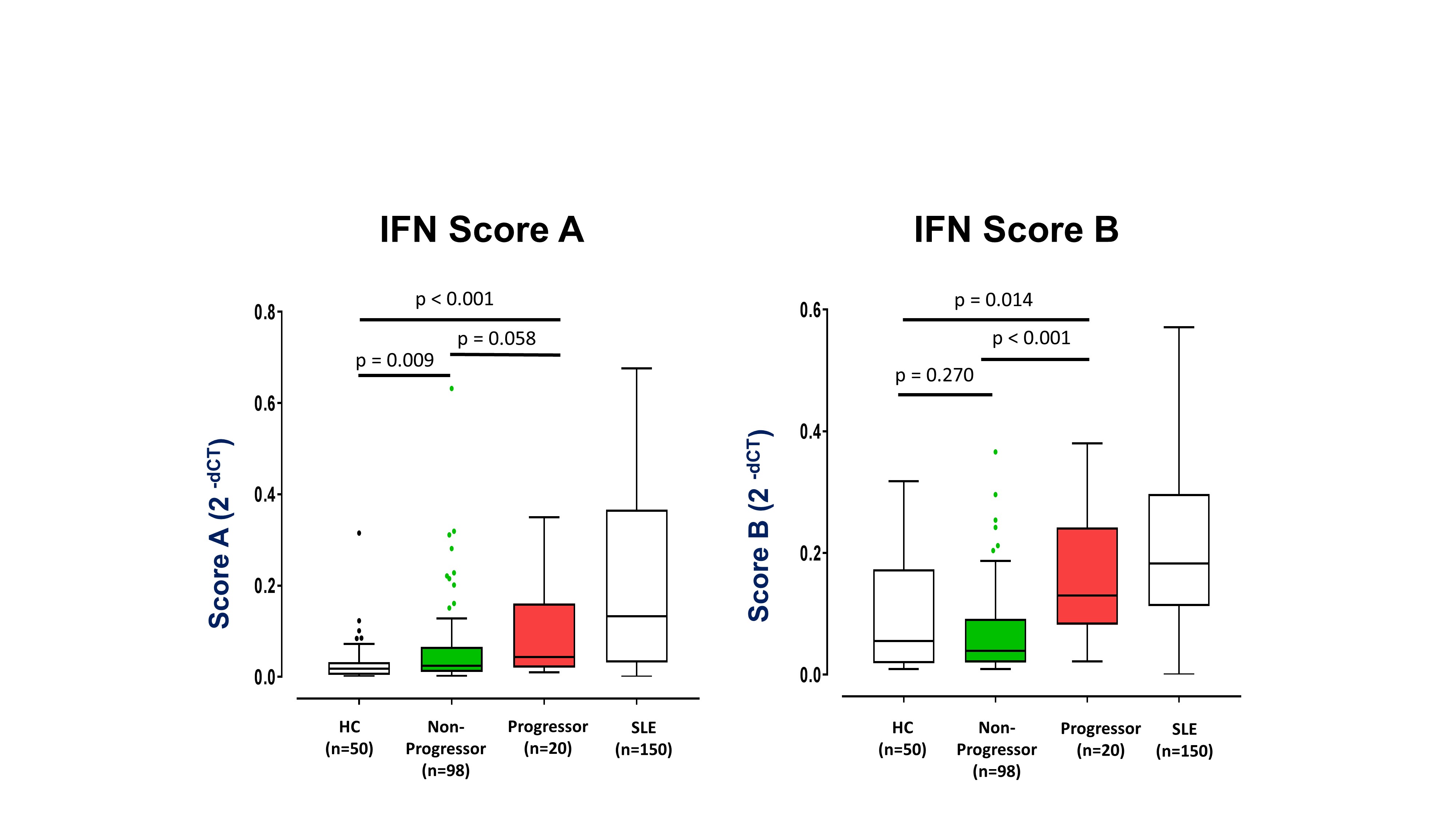Session Information
Date: Tuesday, November 7, 2017
Title: Systemic Lupus Erythematosus – Human Etiology and Pathogenesis I
Session Type: ACR Concurrent Abstract Session
Session Time: 2:30PM-4:00PM
Prediction of connective tissue disease in an at-risk cohort using a novel interferon stimulated gene expression score
Background/Purpose: A period of ANA positivity and other immune dysregulation precedes autoimmune connective tissue disease (CTD), providing a potential opportunity for disease prevention. Type I interferons (IFN-I) are important mediators of CTDs but their role in disease initiation is unclear. The objective of this study was to develop biomarkers of progression to CTDs, with a view to enabling early intervention for disease prevention.
Methods: A prospective observational study was conducted in 150 patients. At Risk of CTD was defined by (i) ANA; (ii) ≤1 clinical SLE criteria; (iii) symptom duration <12 months and (iv) treatment-naïve. Progression was defined by meeting 2012 ACR/SLICC SLE, 2016 ACR/EULAR Primary Sjogren’s, or other diagnostic criteria. Using factor analysis, we previously reported a novel IFN score which comprised 30 selected IFN stimulated genes (ISGs), as measured using TaqMan, into two factors scores: (i)“Score A” (composed of IFN-α responsive genes) and (ii)“Score B” (genes responsive to IFN-α, b and γ). 50 healthy controls and 150 SLE patients were used as negative and positive controls. Penalised logistic regression using Lasso method was used to identify baseline predictors of CTD progression.
Results: 118 patients with 1-year follow-up data were included in this analysis. 104 were female with median age (range) 48 (20-84) years. 20 (17%) patients progressed to CTD (SLE=14, Sjogren’s=5) in the following 12 months. At baseline, in At Risk CTD vs healthy controls, only IFN Score A was increased; p=0.002. IFN Score B was only increased in true established SLE. In At Risk patients, IFN Score B was low in patients who did not progress and increased in those who did progress; p<0.001. ROC indicated that a Score B level of >0.126 yielded Area Under the Curve (AUC) of 0.82 with 58% sensitivity, 85% specificity, 46% positive predictive value and 90% negative predictive value in predicting progression. However, there was only a trend to difference in IFN Score A between these two groups; p=0.058 (Figure 1). A positive family history of autoimmune rheumatic disease (AIRD); OR 4.22 95% CI (1.07 – 16.73) and Score B; 2.70 (1.38 – 5.28) increased the odds of CTD progression at 12 months in multivariable analysis.
Conclusion: A novel ISG score and family history of ARD predict progression from ANA+ to clinical autoimmune disease. These may allow early intervention to prevent CTD. Analyses of other immunological biomarkers and longitudinal tests are in progress as well as a validation cohort.
To cite this abstract in AMA style:
Md Yusof MY, El-Sherbiny YM, Psarras A, Hensor EMA, Alase A, Mohamed A, Wittmann M, Emery P, Vital EM. Prediction of Connective Tissue Disease in an at-Risk Cohort Using a Novel Interferon Stimulated Gene Expression Score [abstract]. Arthritis Rheumatol. 2017; 69 (suppl 10). https://acrabstracts.org/abstract/prediction-of-connective-tissue-disease-in-an-at-risk-cohort-using-a-novel-interferon-stimulated-gene-expression-score/. Accessed .« Back to 2017 ACR/ARHP Annual Meeting
ACR Meeting Abstracts - https://acrabstracts.org/abstract/prediction-of-connective-tissue-disease-in-an-at-risk-cohort-using-a-novel-interferon-stimulated-gene-expression-score/

